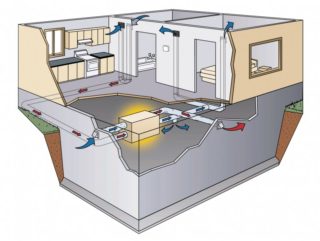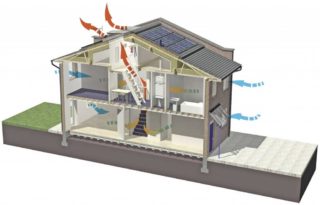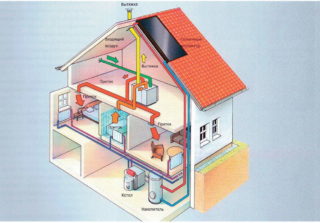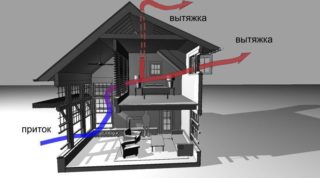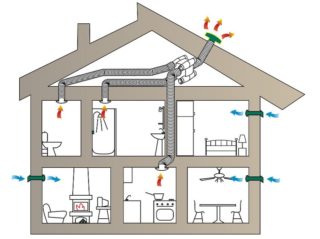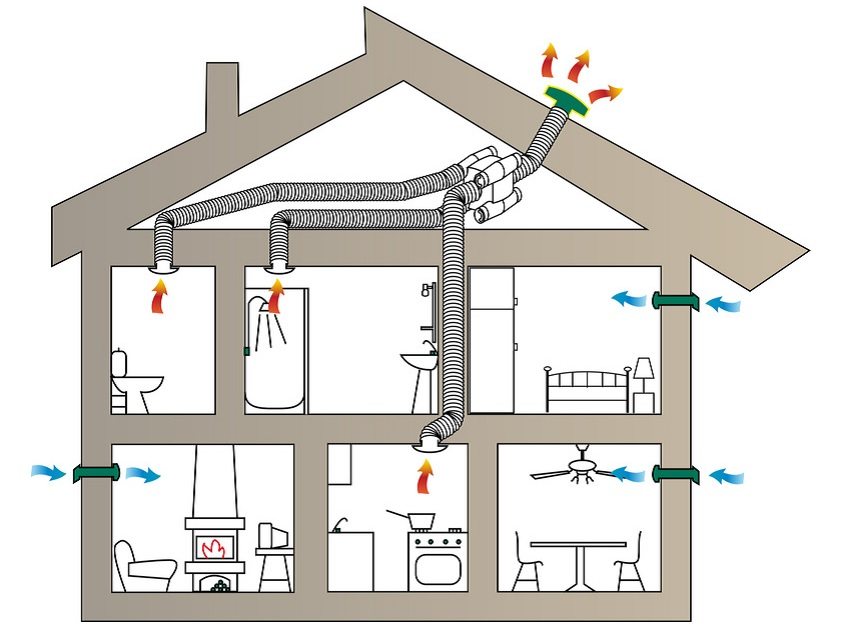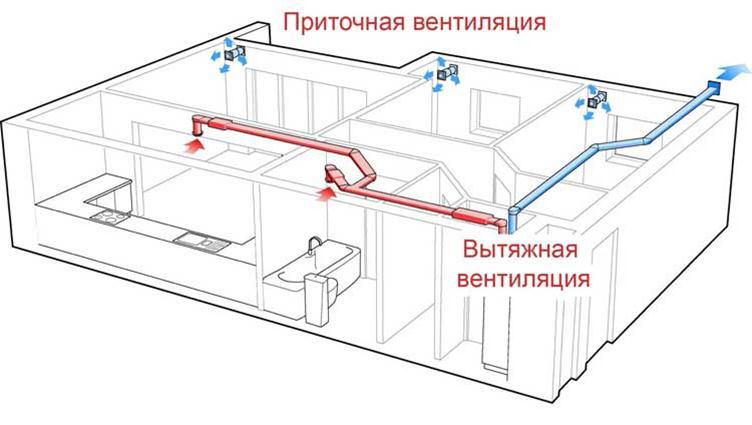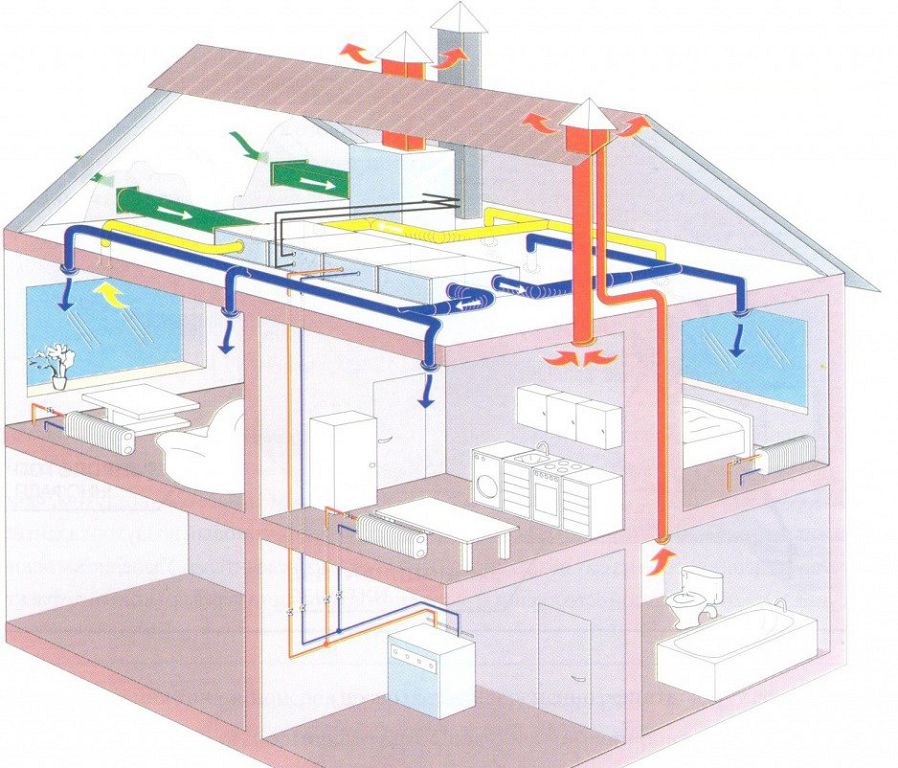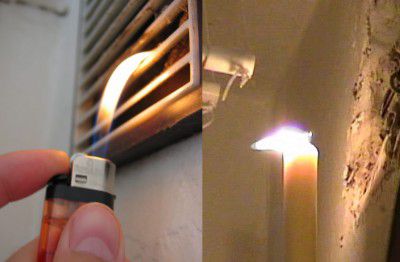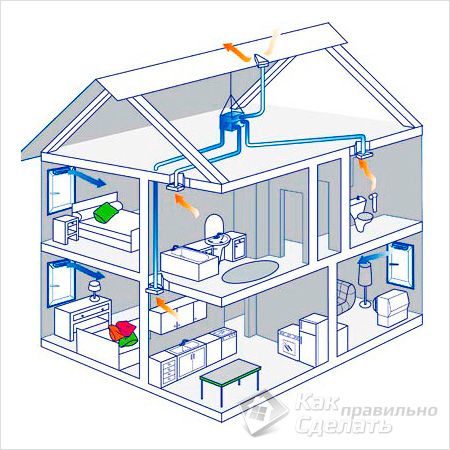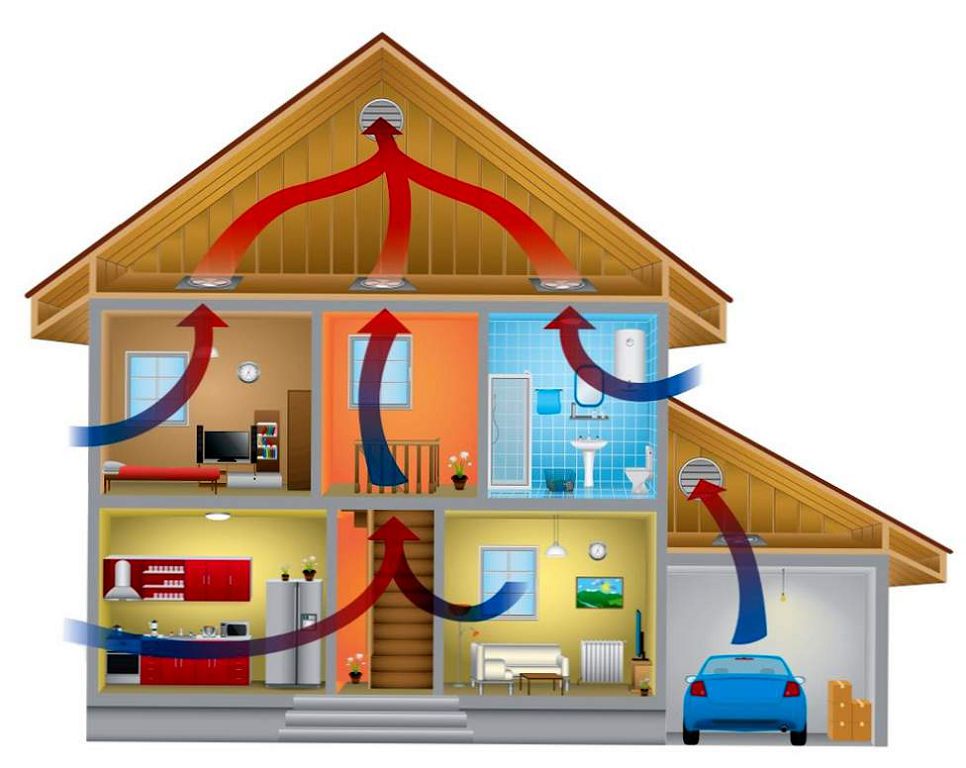The ventilation system is a necessary attribute of a private house. After all, the microclimate in the house depends on its quality - so that it is warm and dry. For this, you should familiarize yourself with all types of ventilation, their pros and cons, and choose the best option.
Forced ventilation
As a result of the operation of the air handling unit, a high pressure is generated caused by the volumetric inflow of fresh air without forced exhaust of the exhaust air. The release of polluted air occurs naturally - through the cracks in the windows and doors.
Pros:
- Efficient air supply to the room;
- filtration of external air flow;
- heating and cooling of incoming air;
- low noise level.
Minuses:
- the need for professional calculation and design
- large dimensions of the supply unit
Exhaust ventilation
Pros:
Large selection of fans and additional accessories for them.
Minuses:
- The exhaust unit is difficult to install after building a house. Therefore, it must be designed in advance.
- High power consumption.
Supply and exhaust ventilation
A special device is installed in the room - a convector. It is needed to purify the outdoor air that enters the house. Also, the convector has the function of heating or cooling the room.
The principle of operation of the supply and exhaust ventilation system is based on the pressure drop of the air masses. A high-pressure fan blows fresh air into the house. And as a result of a sharp pressure drop, the contaminated one is pushed out through the exhaust ducts.
Pros:
The system is purchased as a complete set. Accordingly, the unforced costs of additional items for ventilation are not needed.
Minuses:
- You will need to periodically clean the channels as they become easily dirty.
- The system can freeze during the cold season if turned off for a long time.
- If during installation mistakes were made, then dirty air will not leave the room.
- The system will work effectively only during the passing season, since its operation depends on the difference in temperature regimes.
Natural ventilation
Pros:
- Simple construction.
- Good air circulation.
- Possibility to improve work with additional devices.
Minuses:
- Inability to regulate the incoming and outgoing air flows.
- Dependence on the weather outside the home, especially wind or lack of it.
- Requires careful control, cleaning and repair.
Forced ventilation
- air intake grill, which provides protection against dust and small objects from entering the system;
- filter with varying degrees of purification to clean the incoming air;
- an air valve, which is necessary to block the incoming air in the off state;
- air heater - a device that is responsible for heating the air. Heaters can be electric and water. It is the latter that are best used for a private house, because they can cope with a large flow of air masses;
- silencer, which is used for quiet operation of the unit;
- a fan that creates the right pressure inside the system;
- duct to distribute the movement of air in the room;
- air diffusers, devices that supply air to a specific area of the house;
- an automatic control system that monitors the operation of the ventilation system.
Depending on the distribution of air and the area of the house, forced ventilation can be local or general exchange. The local system is responsible for a specific area of the room - it is suitable for large houses. The general exchange system ventilates the air throughout the room. Therefore, it is better to place it in small houses.
Pros:
- She is not affected by the weather outside the home.
- Huge selection of systems - you can choose a system depending on the required characteristics.
- The fan has both supply and extract modes.
- Purifies the air, so the house is always fresh.
Minuses:
- Has a high monetary value.
- A very time consuming installation system.
- High power consumption of the system.
Emergency ventilation
Emergency ventilation is installed as an additional, backup ventilation duct, which opens automatically as a result of emergency (fire, high humidity, etc.). There can be no pros and cons of emergency ventilation, since it is a necessity for the safety of the house.
Choosing a ventilation system for a private house is a difficult task. However, if you correctly approach the choice, evaluate all the pros and cons of each of the installations, then the microclimate in the house will be under reliable and high-quality protection.

